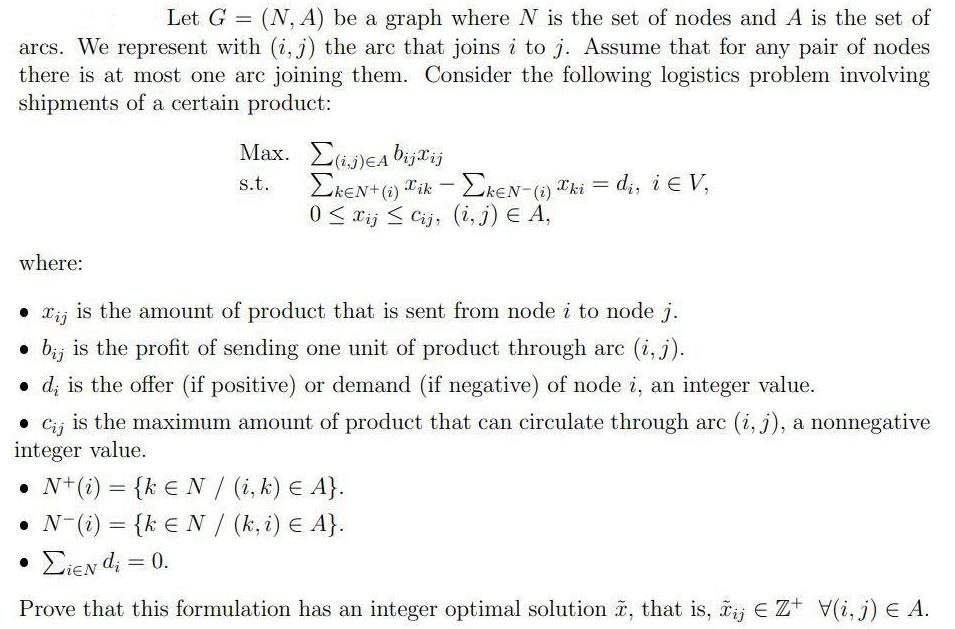Answered step by step
Verified Expert Solution
Question
1 Approved Answer
Let G = (N, A) be a graph where N is the set of nodes and A is the set of arcs. We represent

Let G = (N, A) be a graph where N is the set of nodes and A is the set of arcs. We represent with (i, j) the arc that joins i to j. Assume that for any pair of nodes there is at most one are joining them. Consider the following logistics problem involving shipments of a certain product: Max. (ij)eA bij ij + (i) Xik - -(i) *ki = di, i V, s.t. 0xij Cij, (i, j) A, where: Tij is the amount of product that is sent from node i to node j. bij is the profit of sending one unit of product through arc (i, j). di is the offer (if positive) or demand (if negative) of node i, an integer value. Cij is the maximum amount of product that can circulate through arc (i, j), a nonnegative integer value. N+(i) = {kEN / (i, k) = A}. N-(i) = {kEN / (k, i) A}. ZieN di = 0. viEN Prove that this formulation has an integer optimal solution , that is, ij Z+ V(i, j) A.
Step by Step Solution
★★★★★
3.50 Rating (163 Votes )
There are 3 Steps involved in it
Step: 1
ANSWERS 1 The optimal solution to the above formulation will be integer as the objective function and all the constraints are linear and the only vari...
Get Instant Access to Expert-Tailored Solutions
See step-by-step solutions with expert insights and AI powered tools for academic success
Step: 2

Step: 3

Ace Your Homework with AI
Get the answers you need in no time with our AI-driven, step-by-step assistance
Get Started


